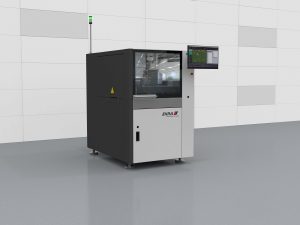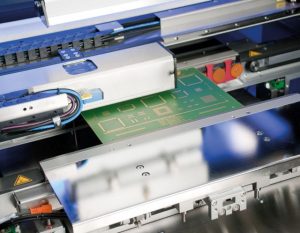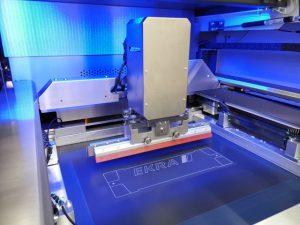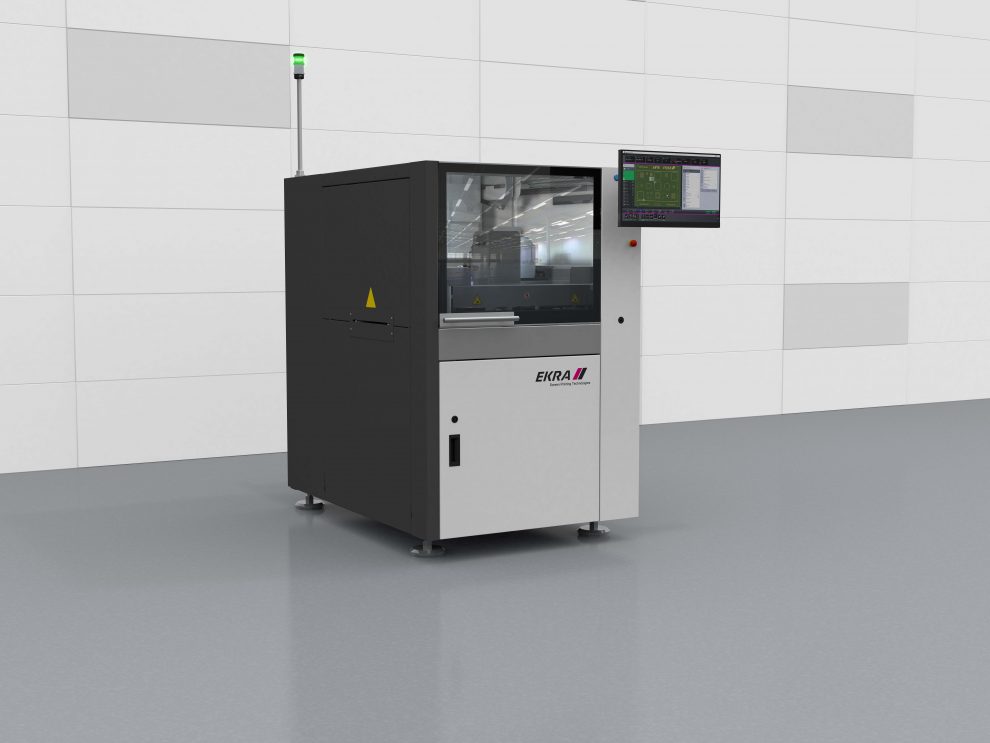It is well known that modern paste printing systems are characterised by their high flexibility: The printing systems adapt dynamically to changing requirement profiles. Continuous miniaturisation requires reliable, reproducible paste transfer in the micrometre range.
Key factors that determine successful paste transfer are the flatness of the substrate and its coplanarity to the stencil. Coplanarity directly influences the release behaviour during the separation process. Usually, substrates are a few tenths of a millimetre thin and usually not 100% flat. Special transport and holding systems are used for such cases.


On the one hand, the substrate must be transported securely, on the other hand, it must be fixed flat, snap-off-free and coplanar for printing. It is important that the substrate is fully supported. The result is a completely flat surface for print application.
It goes without saying that reproducible high quality also requires reliably reproducible conditions. This depends on the design of the printing table and the camera system of the printing system.
The camera must be able to reliably detect the smallest fiducials on varying substrate materials such as lead frames, wafers and ceramics (to name but a few). However, the system must also be able to work with synthetic fiducials and edge alignment as well. Integrated measuring systems with feedback into the positioning control loop enable micrometre-precise lateral alignment of the substrate against the stencil. This ensures optimum sealing for each individual printing process.
But the vertical lift must also work with high precision. With stencil thicknesses in the less than 2-digit micrometre range, any overstretching can lead to stretch or destruction of the stencil. On the other hand, the printing process with solder paste type 7 or 8 requires a perfect seal. Otherwise, the solder paste, which has a grain size of less than 10µm, can escape at the unsealed areas and form bridges. Since the separation of the substrate from the stencil also has an influence on the print result, high-resolution servo motor drives must be used here as well. In this way, the release behaviour of the paste can be optimised as well.
To be able to print ultra-fine-pitch applications perfectly, the printing unit, the print head, must be designed for this. Sufficient printing force, continuously controlled, must be available to ensure ideal filling behaviour. Printing force and speed must be reproducible, as this has a direct influence on the filling level and print volume. The EKRA Autohead, combines motor-driven stroke & pneumatic controlled squeegee pressure. In addition, the stencil must be force-relieved before the separation process in order not to negatively influence the coplanarity during the separation process.

All relevant print parameters can be transferred to the downstream SPI via an interface. This allows complex control loops to be set up for process optimisation, which automatically optimise the printing or separating behaviour in a targeted manner, without any intervention by the operating personnel.




